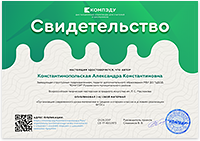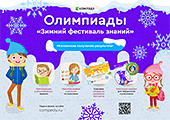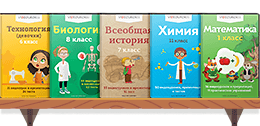Муниципальное общеобразовательное учреждение
«Новосадовская средняя общеобразовательная школа
Белгородского района Белгородской области»
УРОК АНГЛИЙСКОГО ЯЗЫКА В 10 КЛАССЕ
«Кто виноват и что делать.
Воздействие человека на природу»
подготовила:
учитель английского языка
Краснокутская Наталья Николаевна
п. Новосадовый
2022
Тема урока: «Кто виноват и что делать? Воздействие человека на природу»
Тип урока: урок комплексного применения знаний.
Технология урока: Развитие критического мышления через чтение и устную речь (проектная деятельность, кластер, стратегия Fishbone)
Цели:
развитие монологической речи учащихся с использованием новой лексики, формирование целостного представления о мире, о проблеме сохранения окружающей среды;
систематизация и обобщение знания учащихся по теме.
Образовательные задачи:
способствовать расширению кругозора по теме;
развивать умения работать с текстом, видеоматериалом: учить анализировать его и строить логическое высказывание на основе полученной информации.
Воспитательные задачи:
поддерживать дух толерантности, принимая другие точки зрения в ходе групповой работы;
формировать способность осознать экологические проблемы и желание помочь природе.
Развивающие задачи:
развивать навык общения на английском языке, умение работать с новой информацией;
способствовать развитию аналитического, критического мышления через обсуждение проблемных ситуаций;
развить умения конструктивного взаимодействия (умения работать группе; выслушать собеседников).
Оборудование урока: раздаточный материал для учащихся компьютер с выходом в Интернет, мультимедийная установка, колонки, аудиофайлы.
Тема урока определена в соответствии с календарно-тематическим планированием. Урок построен в соответствии с требованиями ФГОС. На данном уроке формировались личностные результаты:
метапредметные: совершенствование навыков поисковой деятельности, умений делать сопоставительный анализ, представлять приобретенную информацию в виде проектов, делать рефлексию;
предметные: совершенствование иноязычной коммуникативной компетенции в рамках обозначенной темы
личностные: формирование коммуникативной компетентности в общении и сотрудничестве со сверстниками; формирование понимания необходимости решения проблем экологического характера
Ход урока
(Учащиеся разделены на 3 группы: «Исследователи», «Спасатели», «Аналитики»)
I. Организационный момент:
Dear boys and girls, I'm glad to see you. I hope you are fine. So let's begin our lesson.
II. Осмысление темы урока. Этап мотивации.
There are some English words on the red cards. Look them through. Find the odd words and guess what topic we are going to discuss today.
| environment, deforestation, pollution, global warming, landfills |
Do you know these words? What do they mean?
The subject of today's discussion is very vivid. Today we are going to talk about the human impact on the Earth.
III. Осмысление задач. Этап вызова
a) Watch the video. How do you understand the words:
«Your actions will determine your fate, not mine»
«Yes, your future depends on me»
b) Просмотр видеоролика “Nature is speaking” (http://ci-intl.org/1OiRBh3)
На экране:
| We face these problems everyday and everywhere
|
The main questions are:
WHO IS TO BLAME?
HOW SHOULD WE LESSEN HUMAN”S IMPACT ON THE EARTH?
IV. Организация групповой работы. Осмысление содержания.
Осуществление непосредственного контакта с новой информацией (статистика, факты из прессы, видео, материал учебника). Работа предполагает индивидуальный поиск и обмен идеями.
Let’s work in groups.
1. The group "Researchers" will work with statistical data and facts from various sources . It is necessary to present material about such an urgent environmental problem as "garbage".
| Some facts: Every day, about 2-2. 5 million tons of human waste end up in natural water bodies. The usual plastic bottles decompose for about 500-550 years. Every 30-35 kilometers, the average passenger car emits about 500-600 g of gaseous waste into the environment. Although 50-60 years ago, one average passenger car every 30-35 kilometers threw about 12.5-15 kg of gaseous waste into the environment, in those days there were much fewer cars, so now the environment suffers more than half a century ago. In one year, people in Russia throw away about 70 million tons of unnecessary things. We can calculate that it is about 500 kg per each person living in Russia. Some marine life confuse plastic bags with jellyfish, swallow them and die. The Swedes buy garbage from other countries, and then recycle it and use it to generate electricity. Only 4-5% of garbage in Sweden is buried in the ground, the remaining 95-96% become a source of fairly cheap energy. About 1 to 2% of all landfills in the United States of America are occupied by ordinary baby diapers. Since diapers take about 250 to 260 years to decompose, they can become the main source of air pollution in the United States in 140 to 220 years. Pollution hovering over the territory of China can be seen from space. Every year, about 5 to 6 tons of lipsticks, eye shadows, foundation creams, sun creams and other cosmetics enter the waters of the World Ocean. The beaches of California can rightly be called the cleanest in the world, but during the next clean-up day on one of the California beaches, volunteers collected about 330 – 340 thousand cigarette butts!
|
As a result of the work, you must make a poster advertising the recycling of garbage.
Try to answer the questions:
1. Why the problem of garbage has become so actual?
2. What are the disadvantages of landfills and incineration of garbage?
3. What are the advantages of recycling?
2. The Group "Rescuers", you must match the problems and their solutions. Then express the results of your work in a “fish bone” Maybe you can do it on a smart board.
| Problems | Solutions |
| Deforestation. Today, about 30 percent of the planet's land area is covered by forests. About 7.3 million hectares of forest are destroyed each year, mostly in the tropics | Concerted efforts need to be made to prevent further loss of biodiversity. Protecting and restoring habitats is one side of this. This should be done in partnership with locals, so that wildlife conservation is in their social and economic interest. |
| Air pollution and climate change. Unfortunately, there's now too much carbon in the air. Burning of fossil fuels, deforestation for agriculture, and industrial activities have pushed up atmospheric CO2 . The World Health Organization recently estimated that 9% of death were attributable to diseases caused by carcinogens and other poisons in polluted air. | Stop destroying of natural forests, and restore degraded areas by replanting with native tree species. |
| Species extinction. On land, wild animals are being hunted to extinction for meat, ivory, or "medicinal" products. At sea, huge industrial fishing boats equipped with bottom-trawling or nets clean out entire fish populations. | Soil conservation and restoration |
| Soil degradation. About 12 million hectares of farmland a year get seriously degraded, according to UN estimates.
| Reforestation. Reduce emissions from agriculture. Change industrial processes |
Use not only the text, but also all the accumulated knowledge
3 The team of “Analytics”, you will work with the video clip “How Do Humans Affect The Environment” (https://www.youtube.com/watch?v=0zPcR7wgh0c)/ You can use the text from your text book, too
Before you watch this video look at the blackboard. You are to fill in the 3 columns:
beautiful things we have
dangerous things we do
what can people do to save our planet.
You should make a presentation on the topic of our lesson.
V.Работа и выступления от групп. Стадия рефлексии и анализа.
Каждая группа выдвигает своих представителей для презентации проделанной работы. На этом этапе учащиеся также анализируют проделанную ими работу.
Группа «Исследователи» представляет постер, посвящённый проблеме «замусоривания» нашей планеты и необходимости ресайклинга. Они рассмотрели проблему с разных сторон, при этом решение опиралось на достаточно ясную фактическую базу.
Группа «Спасатели», используя стратегию «Рыбья кость» также выявили проблемы, представленные в текстах и предложили возможные пути их решения.
Группа «Аналитики» на основе анализа просмотренного видео подвели участников к логическому выводу о том, что человек в ответе за сохранение нашей планеты и нет времени для промедления в борьбе за выживание Рефлексия
REFLEXION CARD
| № | Self-estimation | + | - | Difficult to answer |
| 1 | I'm satisfied with my work during the lesson. |
|
|
|
| 2 | I'm satisfied with my work in the group. |
|
|
|
| 3 | All tasks were difficult for me. |
|
|
|
| 4 | This lesson seemed short for me. |
|
|
|
| 5 | I was tired during the lesson. |
|
|
|
| 6 | My mood has improved for the lesson. |
|
|
|
| 7 | The theme was interesting to me. |
|
|
|
| 8 | The theme was useful for me. |
|
|
|
| 9 | The atmosphere during the lesson was comfortable today. |
|
|
|
VI.Вывод
The topic of our today's conversation is very actually. We have come to the right conclusion: the problems are urgent and, we don’t have enough time to discuss all of them.
I'd like to thank you for good work at the lesson.
All of you worked very well. I give excellent marks to...
The lesson is over.
See you later.





